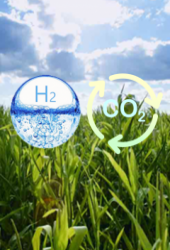Detail:
- ABSTRACT
Electricity is essential for human life, and is a key factor driving economic growth. Therefore electricity planning is important. The delay on the power plant construction may cause generation insufficiency. This paper investigates Public Participation in Power Development Plan for Thailand compared with that issued by New York Independent System Operator (NYISO). It is found that the present Thailand’s planning process lacks of clear planning time frame and clear process announcement. Public participation level is also limited, especially those concerned with information and decision making. Thus a clear planning process with participation form concerned stakeholders is proposed which may lead to a more acceptance to the power development plan.
KEYWORDS : Power Development Plan, Comprehensive Reliability Planning Process, Public Policy, Public Participation, Public Participation Spectrum - ABSTRACT
It is widely known that demand side management (DSM) relates to generation system planning, since appropriate DSM leads to reduction of energy consumption, increase of energy efficiency, and reduction of installed capacity requirement. Another impact of the DSM is also related to reduction of energy cost. Therefore, DSM could have impact on reserve margin in a power development plan. In this paper, demand side management impact on Thailand reserve margin is simulated and analyzed through a proposed methodology. In addition, DSM application for power development plan is illustrated. With the obtained results, the system planners can use as a guideline for the implementation of demand side management for power development plan (PDP).
KEYWORDS : Demand Side Management, Generation System Planning, Power Development Plan, Reliability Assessment - ABSTRACT
The current cost of energy in industry is very high in each year. Many organizations begin to realize the cost of energy and find ways to use energy with maximum benefits. An example is that the various energy saving measures have been campaigning for many factories including those promoted by the government in many ways to encourage energy efficiency in the organization. The consideration of energy efficiency that are appropriate or not for any industrial is most often monitored using the specific energy consumption (SEC), which describes the ratio between the total energy used and a useful output of the process. So, SEC can be used to follow up energy efficiency in the production process. This article offers guidance to increase energy efficiency in the production with refer to SEC in the aspect of maintenance and enhancement for maintenance functions by the principle of Value Engineering (VE). Then, we monitor the parameters in Maintenance, Production and Energy to demonstrate the feasibility of implementation. This article uses data from the electrical maintenance of a petrochemical plant as a case study. The study found that the improvement of maintenance has direct benefits to increase productivity and indirect benefits to improve energy efficiency in the production process by the potential energy saving measures.
KEYWORDS : Productivity, Maintenance, Specific Energy Consumption - Abstract
The objective of this study is to create the evaluation form for energy efficient buildings which can be easily and appropriate to the owner of the residential building. This is to encourage the awareness of energy saving. The evaluation form has been developed by modifying the evaluation form of the Department of Alternative Energy Development and Efficiency . This evaluation form consists of 9 categories; building location, chart area and architecture’s landscape, building structure systems, air conditioning systems, lighting systems, natural and renewable energy, sanitary system, materials and construction ,and techniques and strategies designed to save energy and protect the environment. The mark is divided into two parts which are the energy efficiency and the environmental responsibility .The weighting of the mark is refer to the same weighting in the evaluation form of the Department of Alternative Energy Development and Efficiency. First , the evaluation form is tested by the author with 20 case study reports of the residential buildings that won the energy conservation award. Due to the complete information, the evaluation form can be evaluated easily and quickly. Second, when the evaluation form was evaluated by the owners of the other 10 building cases. It is found that this evaluation form can be evaluated easily except for some topics which are difficult to understand because of technical term and needed calculation. Finally, the evaluation form has been modified by adding the explanation of the technical term which suitable for the building owner.
Keyword : evaluation form, energy conservation, residential buildings - Abstract
This article presents a finite volume method for prediction of turbulent plane jet in crossflow. The purpose is to numerically simulate two-dimensional air ventilation and heat dissipation of the jet. The results are present by the flow or substance dissipation patterns which can be determined by considering the jet trajectory, scalar concentration and flow behavior around the jet exit. The Standard k- and Low-Reynolds number k- models are utilized here. The primary parameter is the jet to cross-stream velocity ratios (R) in two specific ranges i.e. and . The results from the computer program indicate that, when the velocity ratio, R increases, the scalar dissipation behind the jet exit increases. Furthermore, the radii of jet trajectory and scalar centerline trajectory also increase with the increasing velocity ratio. For , the scalar concentration yields large dissipation with the high values dissipating nearby the jet exit. When , the high scalar concentration dissipates close to the bottom wall and further away from the jet exit because of the crossflow influence. It can be seen that the Low-Reynolds number k- model is able to predict the recirculation and near wall effect better than the standard k- model.
Keyword : Jet in crossflow, Turbulent flow, standard k- model, Low-Reynolds number k- - Abstract
Nowadays the demand of energy has increased every year. One of several energy is as important as the primary means of electricity. The electrical power is more desirable in the household, small businesses and in the industry. This article study and evaluate the potential of generate electricity within the community. This study uses the garbage and organic waste material from the market to produce biogas by using Dry Fermentation technology. Gas engine generator is used to produce electricity.
The results show the amount of 94.19 ton/day waste can be produce biogas 17,807 m3/day. It can produce electricity at 12,643 – 24,929 kWh, or 0.53 – 1.04 MW (from up to 1 cubic meter of gas per electricity minimum at 0.71 and maximum at 1.4 kWh) from the calculated, the costs and revenues of the project, it was found that expenditure per day is equal to 12,119 baht, and revenue in both the distribution of electricity and sale of fertilizer from the rest of the biogas production after deduction of expenses in all segments, and then if do not included the Adder value, minimum is at 56,419 baht per day and the maximum is at 89,150 baht per day, and if included the Adder value, minimum is at 62,108 baht per day and the maximum is located at 100,369 baht per day, with the NPV of the project is located at the bottom. 144,561,595 baht and maximum values are equal to 232,162,873 baht and IRR of the project will be the lowest and the highest at 28.93 percent, 48.01 percent.
Keywords :Talad-Thai, biogas production, potential, fresh-food, waste, electricity
Volume : 9 Issue : 1 Year : 2012





